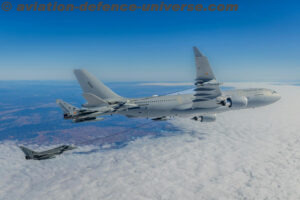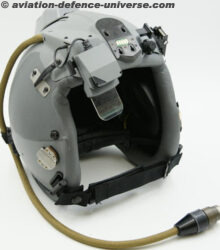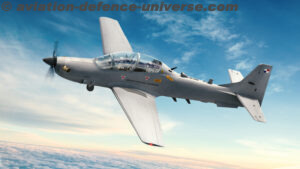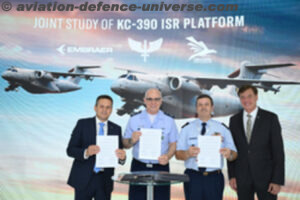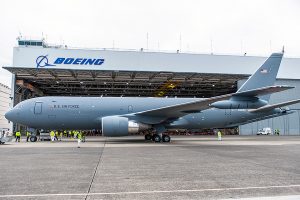
Everett, Washington. 27 January 2019. The first two Boeing KC-46 Pegasus aircraft departed Everett’s Paine Field recently for McConnell Air Force Base, where the 22nd Air Refueling Wing will be the first unit to have these air refueling tankers in their inventory.
McConnell, in Wichita, Kansas, will receive two more tankers in the weeks ahead. Then Oklahoma’s Altus Air Force Base will receive four planes to support aircrew training.
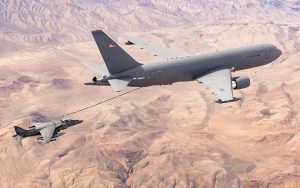
The Air Force will soon begin evaluating the KC-46’s systems in operationally realistic scenarios, which is required before the aircraft can be used in combat. It will also continue validating the KC-46’s refueling capabilities, with aircraft including the B-2 bomber, C-5 cargo plane, and F-35 fighter. Prior testing involved the B-52 bomber, C-17 cargo plane, and F-15E and F/A-18 fighters, among others.

The KC-46, derived from Boeing’s commercial 767 airframe, is built in the company’s Everett, Wash. facility. Including future options, Boeing plans to build 179 of the Boeing 767-based refueling aircraft for the Air Force to replace its legacy tanker fleet.
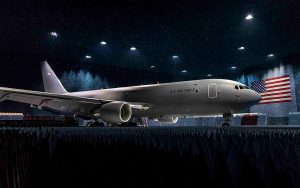
KC-46 is able to refuel 64 different aircraft and that includes all U.S., allied and coalition military aircraft compatible with international aerial refueling procedures. During extensive flight testing, six KC-46 have completed more than 3,800 flight hours and offloaded more than four million pounds of fuel to A-10, B-52, C-17, KC-10, KC-135, KC-46, F-15E, F-16 and F/A-18 aircraft. The Pegasus has been rigorously tested throughout all aspects of the refueling envelope and in all conditions, including day, night and covert.
When in service, the multi-role KC-46 will refuel U.S., allied and coalition military aircraft using its boom and hose and drogue systems, but also must be able to take on fuel to extend its operational range. The boom allows the tanker to transfer up to 1,200 gallons of fuel per minute, while the hose and drogue systems, located on both the plane’s wing and centerline, enables the KC-46 to refuel smaller aircraft with up to 400 gallons of fuel per minute.
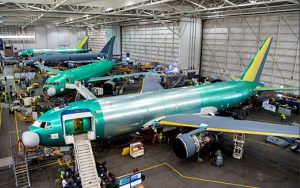
The aircraft can detect, avoid, defeat and survive threats using multiple layers of protection, which will enable it to operate safely in medium-threat environments and rapidly convert for medevac and cargo.






































